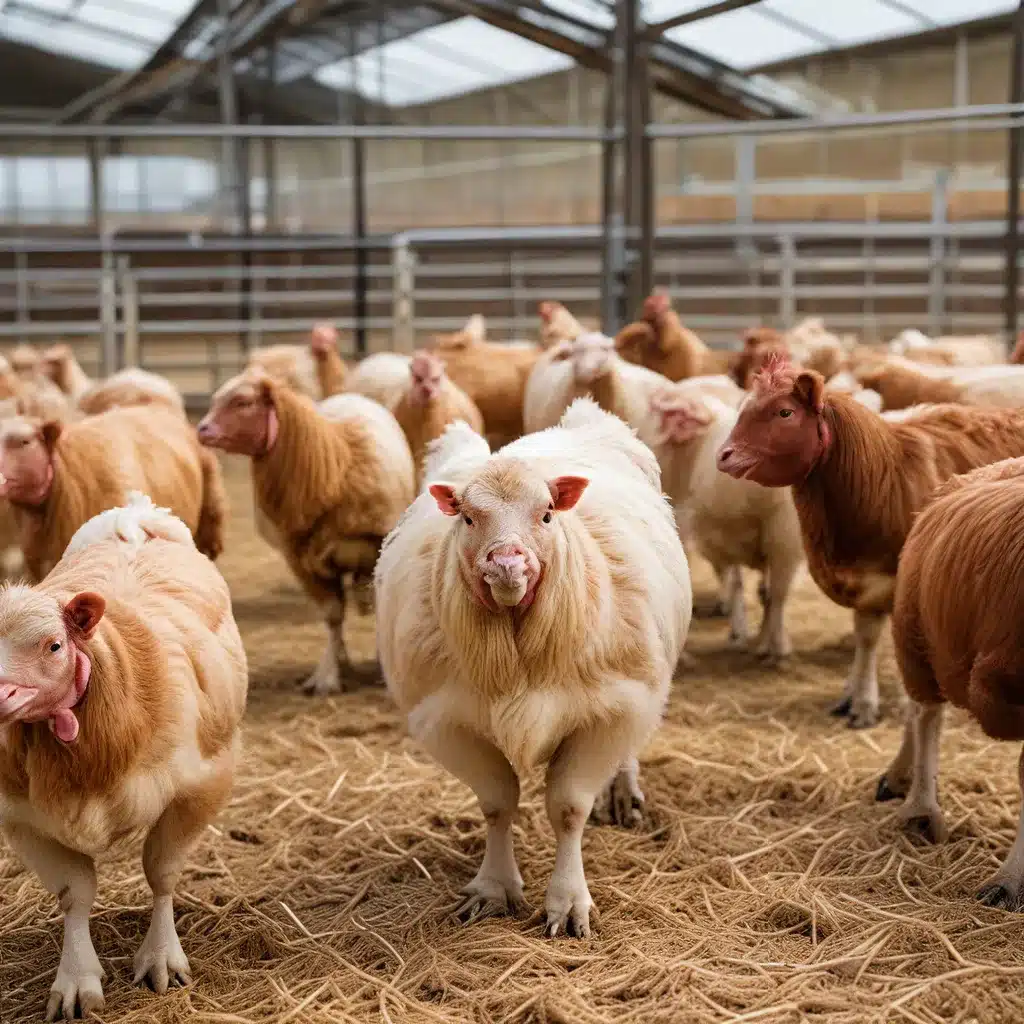
As the world population continues to grow, the demand for efficient and sustainable food production has never been greater. Sensor networks and Internet of Things (IoT) technologies have emerged as powerful tools to revolutionize the agriculture industry, particularly in the realm of precision livestock farming (PLF) for poultry.
The Rise of Sensor-Driven Poultry Farming
Poultry farming plays a crucial role in global food security, providing a valuable source of protein and other essential nutrients. However, traditional poultry production methods often struggle to keep pace with increasing demand while maintaining high standards of animal welfare and environmental sustainability. This is where sensor networks and IoT come into play, offering innovative solutions to optimize poultry farming practices.
Recent studies have demonstrated the significant potential of sensor-driven PLF in poultry operations. By strategically deploying a network of sensors throughout poultry facilities, farmers can gather real-time data on a wide range of parameters, including temperature, humidity, air quality, animal behavior, and feed/water consumption.
Leveraging Sensor Data for Improved Animal Welfare
One of the primary benefits of sensor-driven PLF is the ability to monitor and optimize the living conditions of poultry. By continuously tracking environmental parameters, farmers can ensure that their birds are housed in comfortable, stress-free environments, which is crucial for their overall health and wellbeing.
For example, sensors can detect changes in temperature and humidity within the poultry house, allowing farmers to make timely adjustments to the ventilation systems or heating/cooling equipment to maintain the ideal microclimate. Similarly, air quality sensors can identify potential issues with ammonia levels or dust concentrations, prompting immediate intervention to improve the air quality and reduce the risk of respiratory problems in the flock.
Researchers have also explored the use of sensors to monitor poultry behavior, such as feeding and drinking patterns, activity levels, and resting behaviors. By analyzing this data, farmers can detect early signs of illness or stress and take appropriate actions to address the underlying issues, enhancing the overall welfare of their birds.
Optimizing Productivity through Sensor-Driven Insights
In addition to improving animal welfare, sensor-driven PLF also has the potential to boost poultry productivity and efficiency. By leveraging the wealth of data collected by the sensor network, farmers can make informed decisions to optimize various aspects of their operations.
One example is the optimization of feed and water management. Sensors can monitor the consumption patterns of individual birds or groups, allowing farmers to adjust feed and water supply to match the precise needs of the flock. This not only reduces waste and improves resource utilization but also promotes optimal growth and feed conversion rates, leading to higher overall productivity.
Additionally, sensor networks can assist in proactive disease prevention and early detection. By continuously monitoring animal health indicators, such as body temperature and activity levels, farmers can quickly identify emerging health issues and implement targeted treatment or preventive measures, ultimately minimizing the impact of disease outbreaks and improving flock performance.
Addressing the Challenges of Sensor Network Implementation
While the benefits of sensor-driven PLF for poultry are well-documented, the implementation of such systems is not without its challenges. Ensuring the reliable and secure operation of sensor networks is a critical concern, as cyberattacks and data breaches could compromise the integrity of the system and jeopardize the safety and welfare of the animals.
Robust security protocols, encryption techniques, and access control measures are essential to protect the sensor network and the data it generates. Regular software updates, firmware patches, and employee training on cybersecurity best practices can also help mitigate the risks associated with sensor-driven PLF systems.
Another challenge is the energy management of sensor networks. Poultry facilities can be expansive and geographically dispersed, requiring efficient and sustainable power solutions to maintain the continuous operation of the sensor network. Advancements in low-power sensor technologies, energy harvesting techniques, and wireless power transmission can address these energy management challenges, ensuring the long-term viability of sensor-driven PLF systems.
The Future of Sensor-Driven Poultry Farming
As the global demand for poultry products continues to rise, sensor-driven precision livestock farming is poised to play a crucial role in transforming the industry. By leveraging the power of sensor networks and IoT technologies, poultry farmers can optimize their operations, improve animal welfare, and enhance overall productivity, contributing to a more sustainable and food-secure future.
The future of sensor-driven poultry farming holds great promise, with ongoing research and development in areas such as predictive analytics, machine learning, and autonomous decision-making. As these technologies continue to evolve, we can expect to see even more sophisticated and integrated sensor-driven systems that seamlessly optimize every aspect of poultry production, from animal health to resource management and environmental impact.
By embracing the transformative potential of sensor networks and IoT, the poultry industry can lead the way in sustainable and efficient food production, contributing to the overall wellbeing of both animals and humans. Stay tuned to sensor-networks.org for the latest advancements and insights in this exciting field.